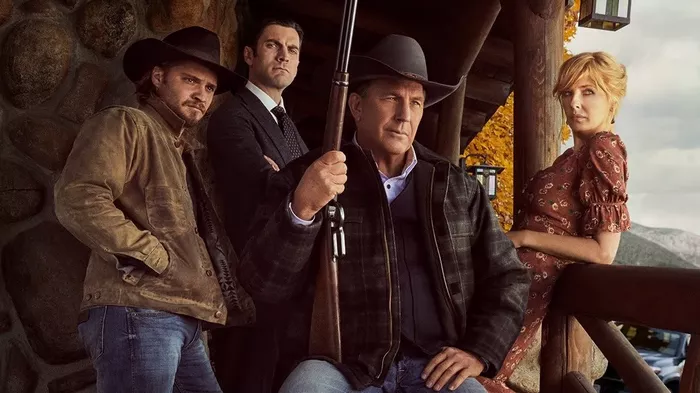In the vast and diverse landscape of country music, there exists a distinctive subgenre that resonates with authenticity and a raw, unfiltered sound – Red Dirt Country. To truly appreciate this unique musical realm, it is essential to first grasp the fundamentals of the broader country music genre. In this exploration, we will delve into the roots of country music, its evolution over the years, and subsequently focus on the intriguing characteristics that define Red Dirt Country.
Understanding the Essence of Country Music
Country music, deeply rooted in American history, has its origins in folk music, blues, and western swing. Emerging from the rural areas of the Southern United States, country music embodies the narratives of everyday life, love, heartbreak, and the struggles of the common people. Characterized by its distinctive twang, the use of string instruments like guitars and fiddles, and heartfelt lyrics, country music has evolved over the decades, giving rise to various subgenres that capture the diverse essence of American culture.
The country music genre has undergone significant transformations since its inception. From the traditional sounds of Hank Williams and Patsy Cline to the modern, polished productions of artists like Taylor Swift and Keith Urban, country music continues to adapt to the changing musical landscape. Despite these shifts, the genre’s core remains rooted in storytelling and emotion, making it a timeless and relatable form of musical expression.
Unraveling the Red Dirt Country Mystique
As we navigate the expansive realm of country music, Red Dirt Country emerges as a distinctive and captivating subgenre. Originating in the red clay soil of Oklahoma, this musical movement gained prominence in the late 20th century, marked by its rejection of mainstream influences in favor of a more grassroots, independent approach. Red Dirt Country artists embrace a DIY ethos, valuing artistic freedom and a direct connection with their audience.
The term “Red Dirt” itself alludes to the unique soil of Oklahoma, and the music born from this region carries the same rugged, earthy authenticity. Artists within the Red Dirt Country scene often blur the lines between country, folk, and rock, resulting in a sound that is both familiar and refreshingly unconventional. This subgenre is not confined by the constraints of commercial success, allowing artists to stay true to their roots and create music that resonates with a devoted fan base.
The Evolution of Red Dirt Country: From Outlaw to Mainstream
In the early days of Red Dirt Country, artists like Jimmy LaFave and The Red Dirt Rangers paved the way for a musical movement that rebelled against the polished and formulaic sound of Nashville. This rebellious spirit, reminiscent of the outlaw country movement led by artists like Willie Nelson and Waylon Jennings in the 1970s, became a defining characteristic of Red Dirt Country.
Over the years, Red Dirt Country has evolved and expanded, incorporating elements from various genres while retaining its distinct identity. Artists like Cross Canadian Ragweed, Jason Boland & The Stragglers, and Stoney LaRue became torchbearers for the movement, bringing a raucous energy and unapologetic attitude to their music. As a result, Red Dirt Country gained a loyal following that extended beyond the borders of Oklahoma, establishing its presence in the broader country music landscape.
The Red Dirt Experience: Live Music and Community Connection
One of the hallmarks of Red Dirt Country is its emphasis on live performances and the connection between artists and their audience. Unlike the polished productions often associated with mainstream country acts, Red Dirt shows are intimate, energetic, and foster a sense of community among fans. The grassroots nature of the movement allows for a direct and personal relationship between artists and their supporters, creating a symbiotic exchange that goes beyond the music itself.
Red Dirt festivals, such as the renowned Medicine Stone Music Festival, have become annual gatherings that celebrate the spirit of the subgenre. These events not only showcase the talents of Red Dirt artists but also provide a platform for emerging musicians to connect with a passionate audience. The communal experience of a Red Dirt concert is as integral to the subgenre as the music itself, reinforcing the idea that Red Dirt Country is not just a genre; it’s a lifestyle and a community.
The Influence of Red Dirt Country on the Country Music Landscape
While Red Dirt Country remains rooted in its independent spirit, its influence has reached far beyond the red clay of Oklahoma. The subgenre’s commitment to authenticity and artistic freedom has resonated with fans seeking a departure from the polished mainstream sound. As a result, Red Dirt Country has inspired a new generation of artists who incorporate its rebellious ethos into their own music.
The impact of Red Dirt can be heard in the works of contemporary country artists who embrace a more rootsy, organic sound. From the gravelly vocals of Cody Jinks to the storytelling prowess of Tyler Childers, traces of Red Dirt’s influence can be found throughout the modern country music landscape. This influence serves as a testament to the enduring power of authenticity and the ability of grassroots movements to shape the trajectory of an entire genre.
Conclusion
In the vast tapestry of country music, Red Dirt Country stands out as a unique thread, woven with the rich hues of authenticity, independence, and community. Understanding the broader context of country music allows us to appreciate the distinctiveness of Red Dirt, a subgenre that refuses to be confined by industry norms. As the red clay soil of Oklahoma continues to inspire a new generation of musicians, Red Dirt Country remains a testament to the enduring spirit of grassroots music within the ever-evolving landscape of country music.

